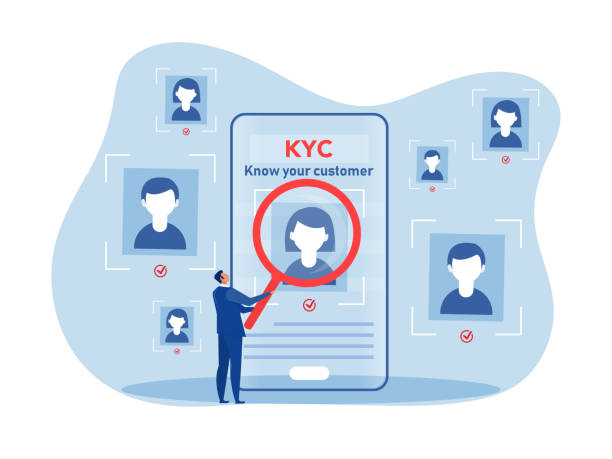Ever since the concept of digitization was introduced in the world, the number of cyberattacks and fraudulent activities escalated. Verifying the customer’s identity became very vital. Fortunately, advances in facial recognition systems now allow for more efficient ID authentication. This entails AML and KYC onboarding procedures for you. The biometric face recognition system, like
DNS Filtering all upcoming innovations is a two-edged sword.

Enhanced facial recognition solutions can allow us to identify and validate customers quickly and more cost-effectively. Choosing the wrong facial recognition solution, on the other hand, can expose your business to complexities. As a result, concerns about data protection, anonymity, and mistaken identity have risen to the top of the list of issues raised by facial recognition debates.
Table of Contents
What is Facial Recognition?
Identity verification technology includes software that recognizes people based on biological properties. Criminal proceedings, for instance, may employ DNA scanners or biometric fingerprints, whereas highly secured systems may employ iris scanning technology. Biometric facial recognition systems use facial features to identify people.
Facial recognition is widely used to instantly identify a person by their facial feature, an image, or a video clip. This is typically used for biometric identification, recognition, or classification.
Because face recognition software scans features in pictures of faces to detect a match, it could be classified as a visual recognition concern. To match a two-dimensional photo to a user, the software recreates a three-dimensional photo from the data gathered from a two-dimensional image.
Biometric facial recognition can detect the visual sequences between the two with the help of lights, gestures, and postures.
The effectiveness of biometric facial recognition without the use of other technologies is why it’s becoming a frequently-used process. Consumers do not have to be physically available or make contact with anything, such as fingerprint identification and DNA tests.
In comparison with iris scanners, face recognition can work from long distances, like from security camera footage. In this regard, facial recognition systems have all the precision of other strategies without depending on the presence of a person.
How Does it Work?
Pattern recognition programs are used in facial recognition solutions. Human bodies have instilled features that are distinct to each individual, like fingerprints, ear structures, hand formation, and so on. These are referred to as biometric modalities.
Face detection works by comparing the biometric modalities in a picture to a live person, or from one picture to the other. The most frequently utilized biometric modalities are:
- Fingerprints: Each finger of every human being on this planet has a unique set of prints and they stay the same throughout the course of their lives, it is the oldest and most successfully used biometric modality
- Iris: Iris uncovers a complex, full of detailed composition which makes it extra exclusive and special than a person’s fingerprint. However, acquiring devices that give you access to iris scanners, are way more expensive than fingerprint devices.
- Face: Unique feature of every face is the alignment of its cheekbones, eyes, nose, and mouth. As a human, we are engineered to match faces and that is why it is more convenient for us to merge manual and AI-based face verification services.
- Voice: Voice biometrics use a person’s pitch, and rise and fall in the voice for recognition.
The facial recognition process is divided into five steps:
Detection
The facial feature detector extracts human faces from pictures and separates them from simple or complex backgrounds. This new tech element separates ‘face’ and ‘non-face’ photos to focus on the face, its position, and its complexity.
Normalization
The face normalization method then uses scriptural directions to geometrically integrate the face. The normalization process selects the recognizing facial patterns and their orientation by utilizing facial landmarks like the ears, mouth, nose, eyes, and face sketch.
Processing
Typical face recognition solutions do not always include a facial processing step. In artificial intelligence technology, this software will aid in the processing of the lighting and pose of the face in order to transfer a two-dimensional photo into a three-dimensional photo.
Extraction
To distinguish among individuals, the extraction process extracts facial characteristics. Using approximately 32 geometric and photometric points, this step transforms the image data into vector representations slotxo.
Comparison
The last stage is the comparative phase. A facial comparison solution compares features in the picture to databases to identify the most suitable match. Facial recognition software that is used for authentication is usually described as Automated Facial Recognition.
AFR uses either closed or open-set recognition when analyzing facial pictures in databases. When an individual appears in the database, closed-set recognition is used to evaluate and authenticate that person. This is the method used for KYC identification. Open-set authentication comes in when an individual is not present in the database, as in a criminal database.
Whereas most face recognition systems include all of these steps, conventional and deep-learning processes vary in how the characteristics are identified.
In conventional face verification solutions, the attributes are configured by humans who design the learning algorithm in the software. The neural network is used to understand the retrieved and contrasting aspects in a deep learning method. This neural network includes a collection of respondents used to equip the technology. The more faces and attributes this operating system analyzes, the larger its neural network and scope of ‘knowledge’ become.
Conclusion
Deploying facial recognition tools and techniques for authentication and validation can accelerate a company’s KYC procedure and will make sure that businesses are following the latest KYC AML compliances. In this identity verification process, merging live detection and face recognition will result in a convenient and more effective verification process that ensures a smooth customer onboarding experience.